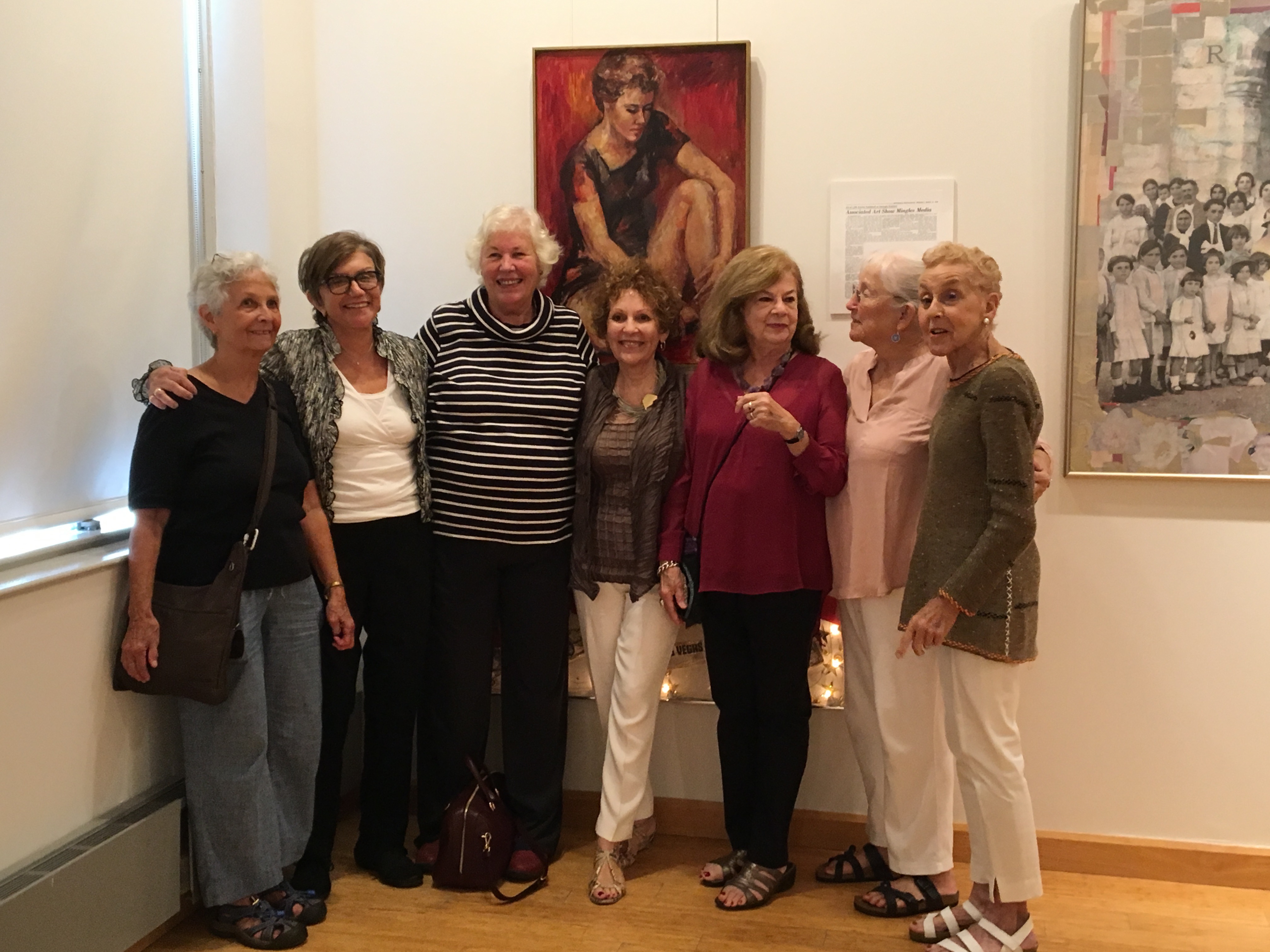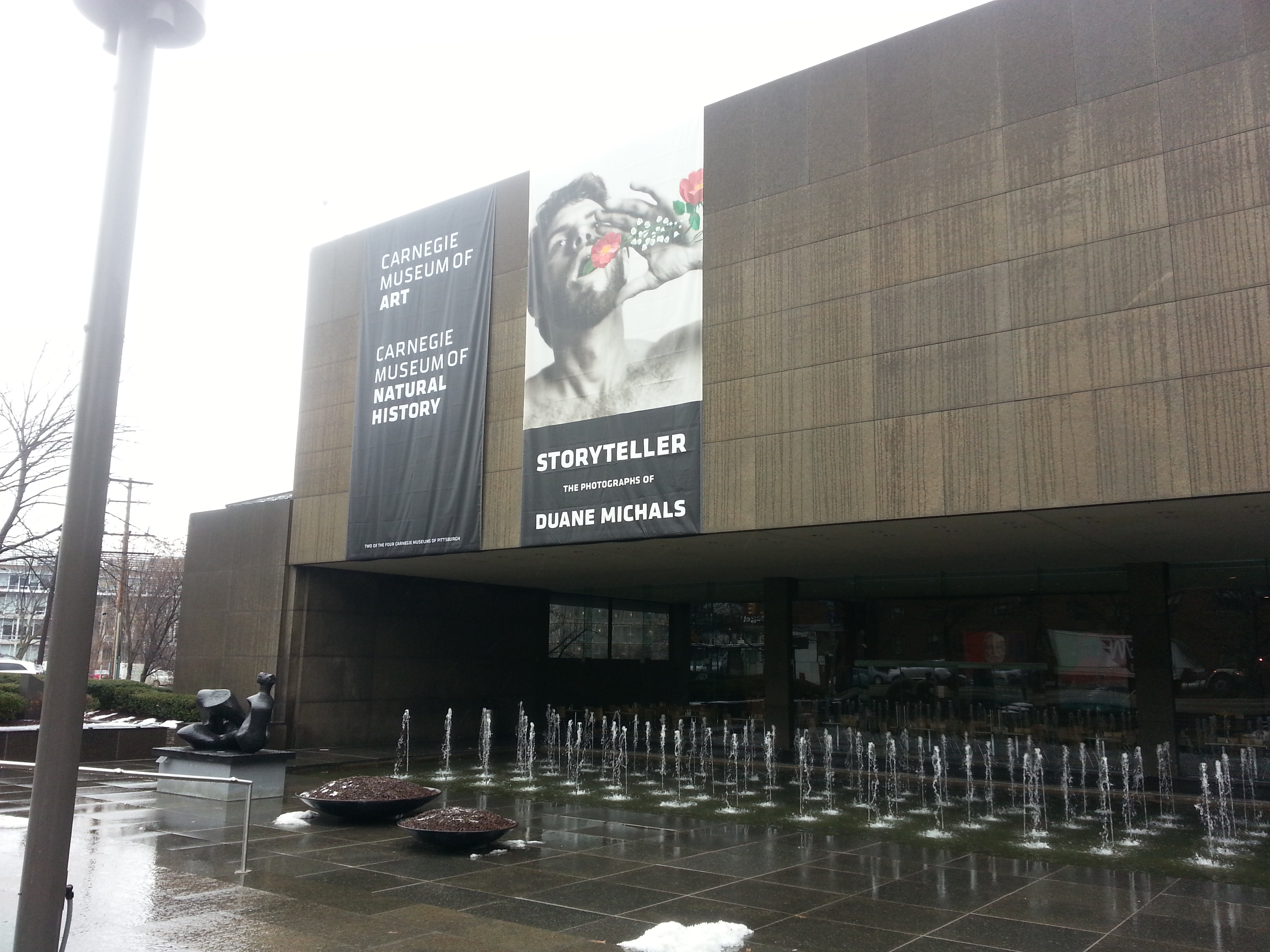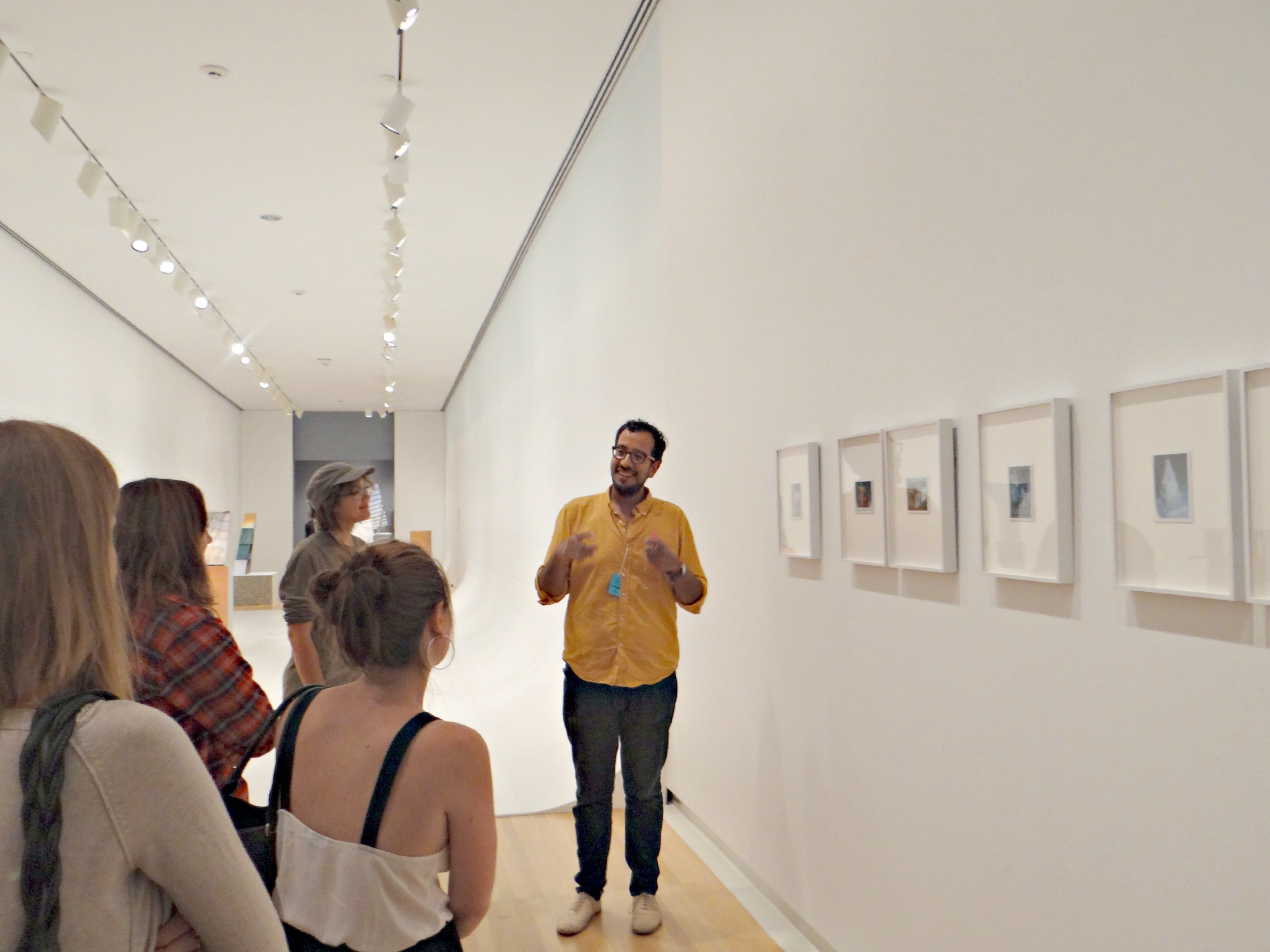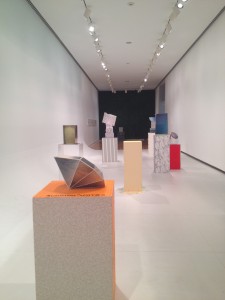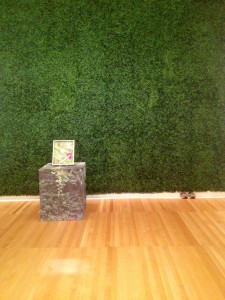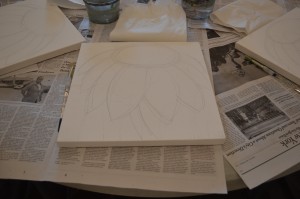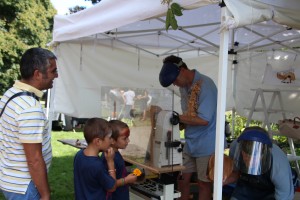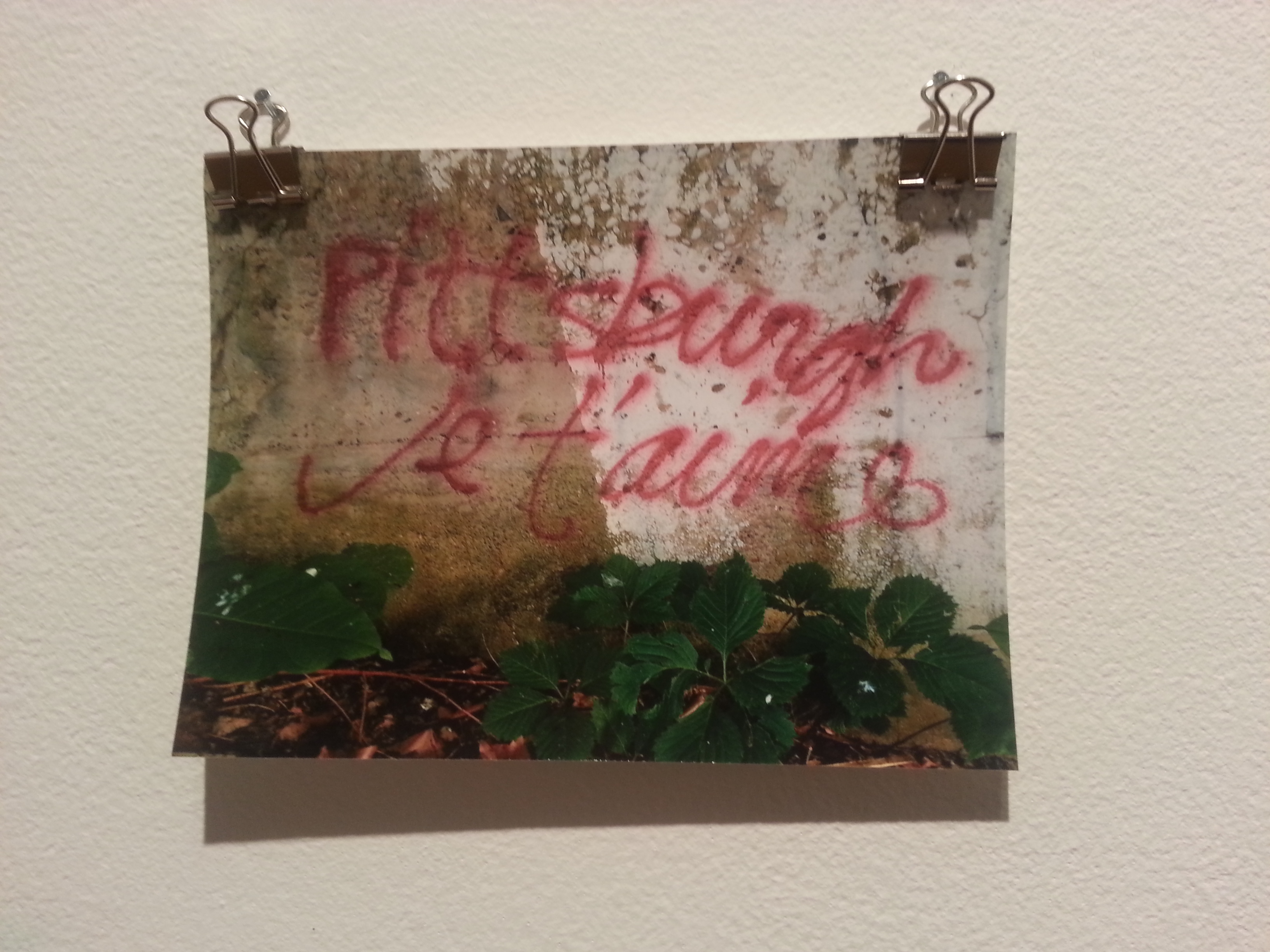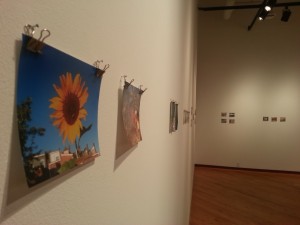With the free access to the Carnegie Museum of Art that Chatham students’ ID cards provide, it is shocking that more people don’t take the time to enjoy this cultural experience. Specifically when the exhibits are constantly changing, like the collection of photography by Pittsburgh native Duane Michals, which is on display until February 16.
Upon entering the Duane Michals exhibit, one might initially find him or herself somewhat confused by the photographer’s apparent criticism of the photographic medium.
The writing on the walls of the exhibit suggest that Michals is very much against the idea of the ‘powerful single image’ and feels that a single photograph can not convey a poignant narrative–a counterintuitive opinion for someone who makes a living taking photographs.
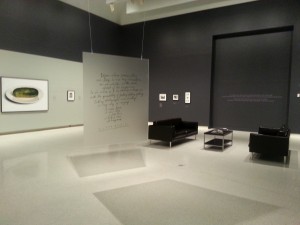
Photo Credit: Katerina Sarandou
The further into the exhibit one gets, however, the more apparent it becomes that Michals is not being critical, he just sees art in a different way than most.
He was once quoted as saying, “I am an expressionist and by that I mean I’m not a photographer or a writer or a painter or a tap dancer, but rather someone who expresses himself according to his needs.”
He also expressed the idea that he does not trust his eyes to find images to photograph, but rather his artwork comes from within himself. As a result his goal is not to document objective reality, but is to create his own introspective reality, based on preconceived images in his head, and to tell a story.
In this way, Michals’s tendency towards creating photo-essays, and writing on his photographs lends itself to his goal of telling a story, or creating a social commentary.

Photo Credit: Katerina Sarandou
In the first piece in the exhibit, entitled, “Things are Queer”, Michals photographed a scene, within a scene, within a scene, and so on until the final image expanded out into the same scene as the original image. Though it may not have been the most compelling of his pieces, the viewer is immediately hooked by the idea, and it is easy to find oneself going back and forth between the first and last images trying to wrap one’s head around the concept.
That piece perfectly illustrates one of Michal’s quotes, in which he says, “My photographs are about questions. They are not about answer.” Each photo in the set gives a bit more information about the narrative, but in the end the viewer is left with nothing more than what he or she started with.
This piece also sets up an expectation for the rest of the show.
Viewing his work is like reading a novel, in that the viewers constantly find themselves wanting to skip ahead to find out how it will end. However it was different from a novel in that the ending gives no concrete answers, only more questions.
Another highlight of the exhibit was the section entitled, “In the Mind’s Eye.”
This examination of human nature is filled with compelling photographs that stick in the viewers’ heads long after they’ve left the exhibit.
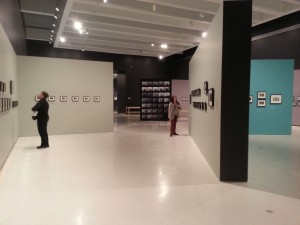
Photo Credit: Katerina Sarandou
In one such piece, entitled, “Christ in New York,” Michals manipulated photographs so that a halo appeared around a man’s head as he intervened in various upsetting events, like a poor immigrant woman eating dog food for dinner, and a gay man being beaten in an alley. In the last photograph the “Christ” character is seen laying on the ground, and Michals’s caption says, “Christ is killed by a mugger with a handgun. The second coming had occurred and no one noticed.”
As a quote on the wall of the exhibit read, “[Michals] disrupted the medium’s trajectory with a radical new way of picture-making.” The fact that he used multiple photos, and text, to turn an image in his head into a visual piece of social commentary makes his work groundbreaking and effective.
The overall theme of Michals’s body of work is one of subtle retaliation against an oppressive system, with the ‘system’ in question being everything from traditional artistic practices, to the social and political atmosphere of the times.
This is especially true when his work–mostly from the late 20th century–is put in the context of the times, when society was fighting for social change, and was rejecting traditional values. Michals is an utterly original artist, and his photography is not only beautiful, but also made makes the viewer think.
